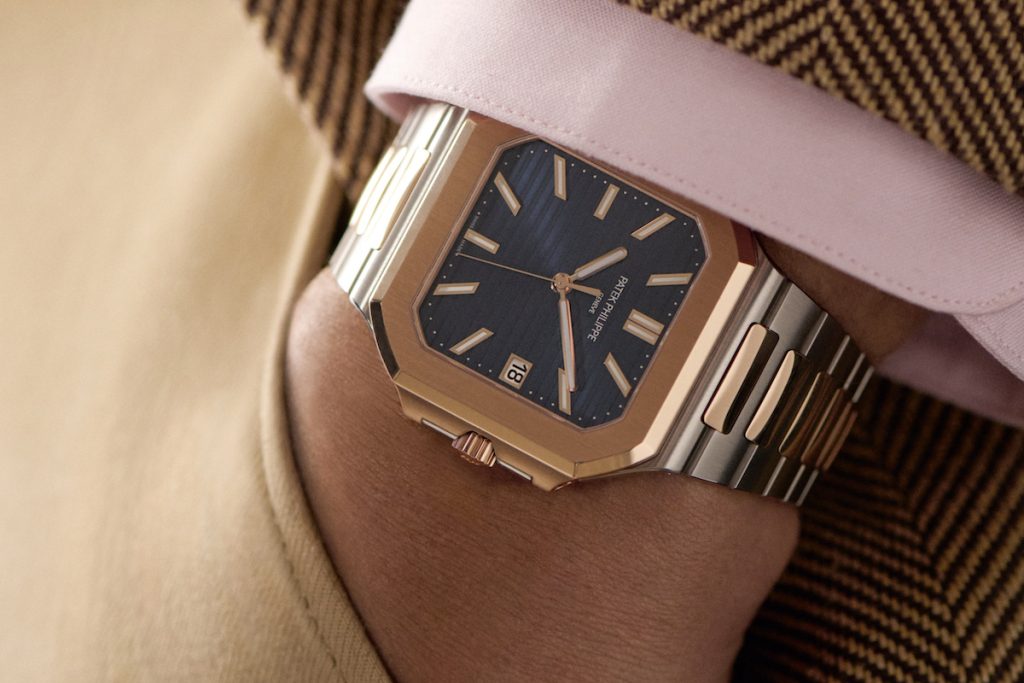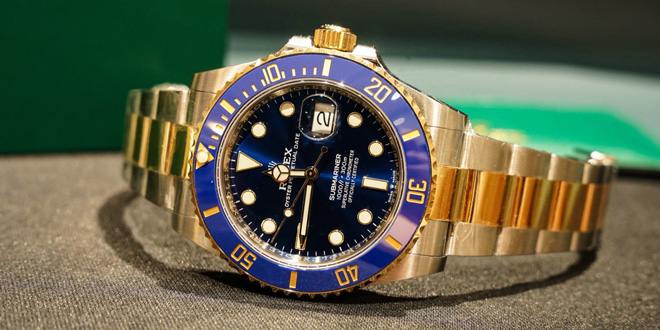Introduction
When it comes to the luxury watch market, two names have consistently stood at the pinnacle of horological excellence for over a century: Rolex and Patek Philippe. These two Swiss watchmakers have cultivated powerful legacies, with Rolex representing a symbol of achievement, success, and practical luxury, and Patek Philippe epitomizing heritage, sophistication, and fine artistry. But beyond their technical prowess and timeless designs, Rolex and Patek Philippe have each carved out unique spaces in popular culture, influencing society, shaping trends, and creating legacies that extend far beyond the realm of watchmaking.
This article seeks to explore the cultural significance and influence of both brands, comparing how each has impacted the world in terms of prestige, symbolism, celebrity endorsement, and consumer perception. Rolex and Patek Philippe are not just watch brands; they are cultural icons that have become entwined with ideas of success, wealth, and legacy. In this deep dive, we’ll examine how these two brands have influenced the global luxury landscape, which one holds more cultural sway, and how their histories have shaped their brand identities and customer loyalty.
We will also consider their respective roles in celebrity culture, sports, art, and society, and explore their impact on fashion, pop culture, and investment culture. By comparing the unique cultural pathways of Rolex and Patek Philippe, we aim to uncover which brand is more than just a timekeeper — which one is the most influential cultural force in the luxury watch market today.
Chapter 1: The Cultural Impact of Rolex
1.1 Rolex: The Epitome of Success
Rolex is more than just a luxury watch brand — it is a cultural symbol of achievement, status, and endurance. Established in 1905 by Hans Wilsdorf and Alfred Davis, Rolex has become synonymous with prestige and luxury worldwide. Over its long history, the brand has cultivated an image that appeals not only to affluent individuals but also to people in the limelight — from celebrities to athletes to entrepreneurs. Rolex’s watches are often seen as a milestone of success, worn by those who have reached the highest levels in their respective fields.
1.1.1 Rolex in Popular Culture
Rolex’s dominance in popular culture is undeniable. Its watches are often seen as the ultimate status symbol — synonymous with the rich and powerful. From its prominent appearances in Hollywood films to being featured on the wrists of iconic figures like James Bond (portrayed by Sean Connery and later Daniel Craig), the brand has cemented its place as a cultural fixture.
- Hollywood Influence: Rolex’s presence in movies has contributed significantly to its image as the watch of choice for successful and powerful characters. From Paul Newman’s Rolex Daytona to the Submariner worn by Bond, Rolex is embedded in the narrative of luxury and sophistication.
- Celebrity Endorsements: Rolex’s cultural influence is amplified by the long list of athletes, actors, and musicians who wear its timepieces. Celebrities like Tiger Woods, Roger Federer, and Lewis Hamilton — all legends in their respective fields — proudly sport Rolex watches. The brand’s involvement in the world of sports and its association with championships and elite competitions further reinforces its cultural cachet.
1.1.2 The Role of Rolex in the Luxury Watch Market
Rolex is arguably the most recognized luxury watch brand in the world. Its presence in the luxury market has shaped the expectations of what a high-end timepiece should represent. The brand’s consistent innovation, reliability, and timeless design have set benchmarks for other watchmakers.
- Symbol of Achievement: Owning a Rolex is often seen as an achievement in itself — a testament to one’s success. Rolex’s appeal transcends merely being a timepiece; it is a cultural statement that speaks to the wearer’s success, wealth, and dedication to quality.
- Brand Loyalty: Rolex has successfully fostered an environment of loyalty and exclusivity. For many owners, a Rolex is more than just a watch; it is a legacy piece that can be passed down through generations. Its ability to retain value over time has made it a desired investment for many buyers, ensuring its status as a symbol of timeless luxury.
1.2 Rolex’s Influence in Sports and Exploration
Rolex’s connection to sports, particularly tennis, golf, motorsport, and sailing, has strengthened its brand identity as a symbol of high performance and elite status. The brand has also carved a niche in the world of exploration, supporting polar expeditions, mountaineering feats, and other high-risk endeavors. These sponsorships and partnerships further reflect the brand’s image as one of endurance, precision, and reliability.
- Tennis and Golf: Rolex’s partnerships with legendary athletes like Roger Federer, Serena Williams, and Phil Mickelson have aligned the brand with the world of competitive sports. Rolex watches are seen as the ultimate companion for athletes at the pinnacle of their careers.
- Motorsport: Rolex’s sponsorship of Formula 1 and endurance racing events, such as the 24 Hours of Daytona, ties the brand to speed, precision, and technical excellence — qualities that Rolex watches have come to embody.
- Exploration: Rolex has been associated with significant explorations throughout history. The brand’s involvement with explorers like Sir Edmund Hillary and Tenzing Norgay (the first to summit Mount Everest), as well as its sponsorship of deep-sea expeditions, reinforces its image as a watch designed for those who test the limits of human ability.

Chapter 2: The Cultural Legacy of Patek Philippe
2.1 Patek Philippe: The Symbol of Tradition and Heritage
Patek Philippe, founded in 1839 by Antoine Norbert de Patek and Jean-Adrien Philippe, is synonymous with luxury, elegance, and heritage. Patek Philippe watches are often seen as the pinnacle of watchmaking craftsmanship, where technical brilliance and artistic beauty merge to create timepieces that are as much about legacy as they are about style.
2.1.1 Patek Philippe in Popular Culture
Unlike Rolex, which has established itself as a more mainstream symbol of luxury, Patek Philippe is often seen as the choice for those with a deep appreciation for fine craftsmanship and timeless elegance. Patek Philippe watches are generally associated with the upper echelon of society and are seen as symbols of heritage, discretion, and refinement.
- Cultural Prestige: Patek Philippe watches are often passed down through generations, making them symbols of family legacy. The brand’s emphasis on creating timepieces that are built to last aligns with its reputation as the maker of heirlooms.
- Celebrity Endorsements: While Rolex has long been associated with the celebrity elite, Patek Philippe is often preferred by those who appreciate subtle luxury. High-profile owners of Patek Philippe watches include Queen Elizabeth II, Brad Pitt, Paul McCartney, and Beyoncé, whose preference for the brand is seen as a mark of distinction.
2.1.2 The Role of Patek Philippe in the Luxury Watch Market
Patek Philippe has a reputation for creating some of the most complicated and exquisite timepieces in the world. The brand’s emphasis on traditional watchmaking methods, along with its focus on complicated movements and masterful finishing, makes it a standout in the world of luxury timepieces. Patek Philippe’s watches often appeal to those who prioritize technical artistry over pure branding power.
- Symbol of Timeless Elegance: Patek Philippe is often considered the watch of choice for collectors who view their timepieces as a long-term investment and family heirlooms.
- Exclusivity and Scarcity: Patek Philippe’s approach to limited production further enhances its appeal. Many of the brand’s models, such as the Nautilus and Calatrava, are produced in very limited quantities, which only adds to their allure as highly coveted objects.
2.2 Patek Philippe’s Influence in Art and Fashion
Patek Philippe’s cultural influence extends beyond watchmaking into the realms of art and fashion. The brand’s collaboration with auction houses such as Christie’s has established Patek Philippe as a major force in the art world. Many of the brand’s timepieces are sold for record prices, underlining its status as a collector’s item and symbol of prestige.
- Artistic Craftsmanship: Patek Philippe’s watches are often seen as works of art. The intricate craftsmanship, attention to detail, and time-honored methods of production place Patek Philippe at the intersection of watchmaking and fine art.
- Fashion Influence: While Rolex watches are typically seen as an everyday symbol of success, Patek Philippe has established itself as the go-to brand for those who appreciate understated luxury. Its classic, elegant designs appeal to those who seek timeless fashion, with watches like the Calatrava and Aquanaut offering a refined elegance that remains relevant through the ages.
Chapter 3: Comparing the Cultural Influence of Rolex and Patek Philippe
3.1 Rolex’s Global Popularity vs. Patek Philippe’s Heritage Appeal
- Rolex has a broader appeal, particularly among younger buyers who appreciate its status and performance-driven designs. It is a global symbol of success, widely recognized and celebrated in popular culture.
- Patek Philippe, on the other hand, appeals to those with a deep appreciation for horological heritage and refined luxury. The brand’s watches often signify cultural sophistication and a desire for legacy, making it the choice for discerning collectors and individuals with a focus on the long-term preservation of wealth.
3.2 Celebrity and Sports Endorsement: Mass Appeal vs. Niche Luxury
- Rolex has widespread celebrity endorsements, particularly within sports and entertainment, creating a brand identity that aligns with mass success. The brand’s association with global athletes, such as Roger Federer and Tiger Woods, enhances its popularity among a wide audience.
- Patek Philippe’s endorsements tend to focus on timeless elegance and artistry, appealing to a more niche luxury market. The brand’s association with figures like Queen Elizabeth II and Beyoncé speaks to its exclusive nature and cultural refinement.
Conclusion: Which Brand Holds Greater Cultural Influence?
Both Rolex and Patek Philippe represent the pinnacle of luxury watchmaking, but their cultural influence manifests in distinct ways. Rolex reigns as the more globally recognized symbol of success, pop culture ubiquity, and athletic achievement, appealing to a wide range of buyers who value performance and prestige. Patek Philippe, in contrast, is seen as a symbol of heritage, elegance, and fine artistry, attracting a more niche group of collectors who seek timeless luxury and sophisticated design.
Ultimately, the question of which brand holds the greatest cultural influence comes down to the values that resonate most with the wearer. For those seeking universal recognition and status, Rolex undoubtedly leads the charge. However, for those drawn to the allure of tradition, craftsmanship, and artistic legacy, Patek Philippe remains the ultimate cultural icon in the luxury watchmaking world.





































